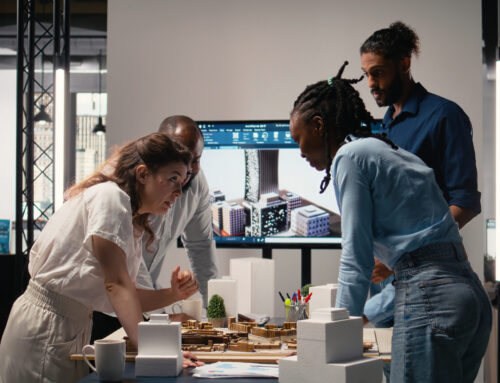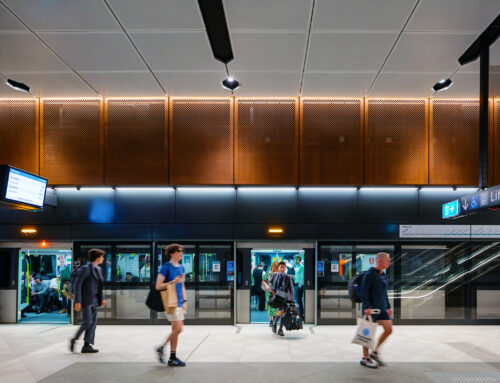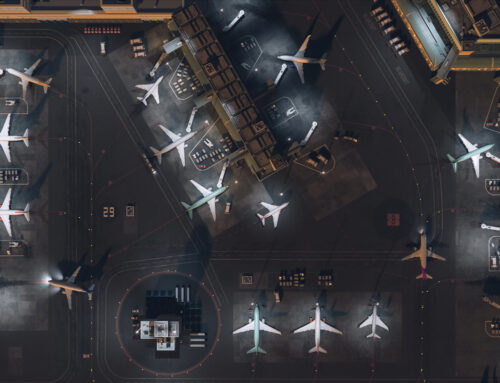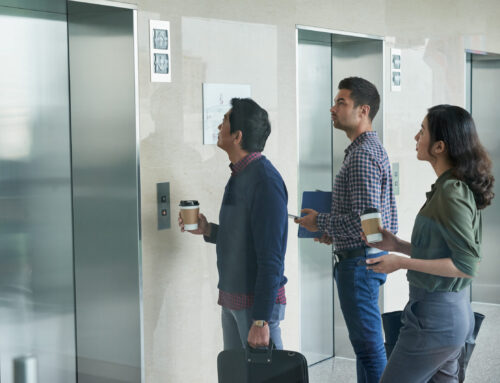Fire engineering on rail projects can be complex. When done right, the approvals process is streamlined and pain free; the station development is safe, compliant and practical to operate and maintain; the user experience is optimised; and all commercial and retail opportunities are maximised.
Interfaces are a key issue we deal with. In mixed-use developments, this could include physical interfaces between different asset classes or building typologies. It could also include interfaces between fire related systems or even between interfacing projects being delivered under different construction contracts.
With over-station developments (OSDs), there are also interfaces between building ownership, for example between a station and connected retail development; offices and residential towers or adjacent bus terminal.
For modern mixed-use transport interchanges, the different uses and spaces need to complement each other so passengers stay safe and there’s a natural flow between the platform and amenities. When not fully considered in fire safety design, a station can be lifeless, impractical to operate and all usage types can suffer.
Engage a fire engineer who understands rail and buildings
Rail developments range from an open air platform with no amenity to an integrated and over-station development housing retail, community facilities, homes, offices and green spaces. They can also include tram stops, level crossings and bus terminals.
The rail sector is different to other sectors in terms of design requirements, processes, standards and stakeholders. Engaging an experienced fire engineer with a solid understanding of both rail and buildings ensures the best outcome for all asset classes.
Standards and regulations
Rail projects have rigorous safety standards, however these standards can’t be implemented in isolation. The prescriptive codes set out in Rail Safety National Law need to be considered alongside state-specific building regulations as well as building code requirements for all other asset classes.
Each set of regulations has different gateways, terminologies, functional requirements and performance requirements. With this comes different stakeholders, processes and technical challenges.
This is where performance-based fire engineering comes in. The role of the fire engineer is often much broader and more holistic compared to other sectors where a building needs to conform to more commonly applied regulatory requirements.
Performance-based fire engineering allows a departure from prescriptive building codes – while still following a rigorous process. When done well, this maximises architectural freedom and ensures more practical solutions that meet the needs of all asset classes within a mixed-use transport interchange, while ensuring all required safety levels are achieved.
Stakeholder management
In a rail project, the number of stakeholders that need to be consulted is significantly larger than a typical building project. Here’s a brief example of who fire engineers may need to consult with especially on major projects:
- The state transport department
- The rail operator
- Relevant local councils
- Building certifiers
- The fire brigade, as well as other emergency services, for example the local fire brigade and the ambulance service
- Neighbouring property owners
- The design team of consultants, of which there are more within the rail sector
- Other groups of consultants operating under different construction contracts, e.g. where the station, tunnel and OSD are different construction contracts
- Stakeholders associated with the systems that are designed on a network-wide basis by third parties and then routed through a station
- Independent safety auditor
- Independent certifier
- Proof engineer or peer reviewer.
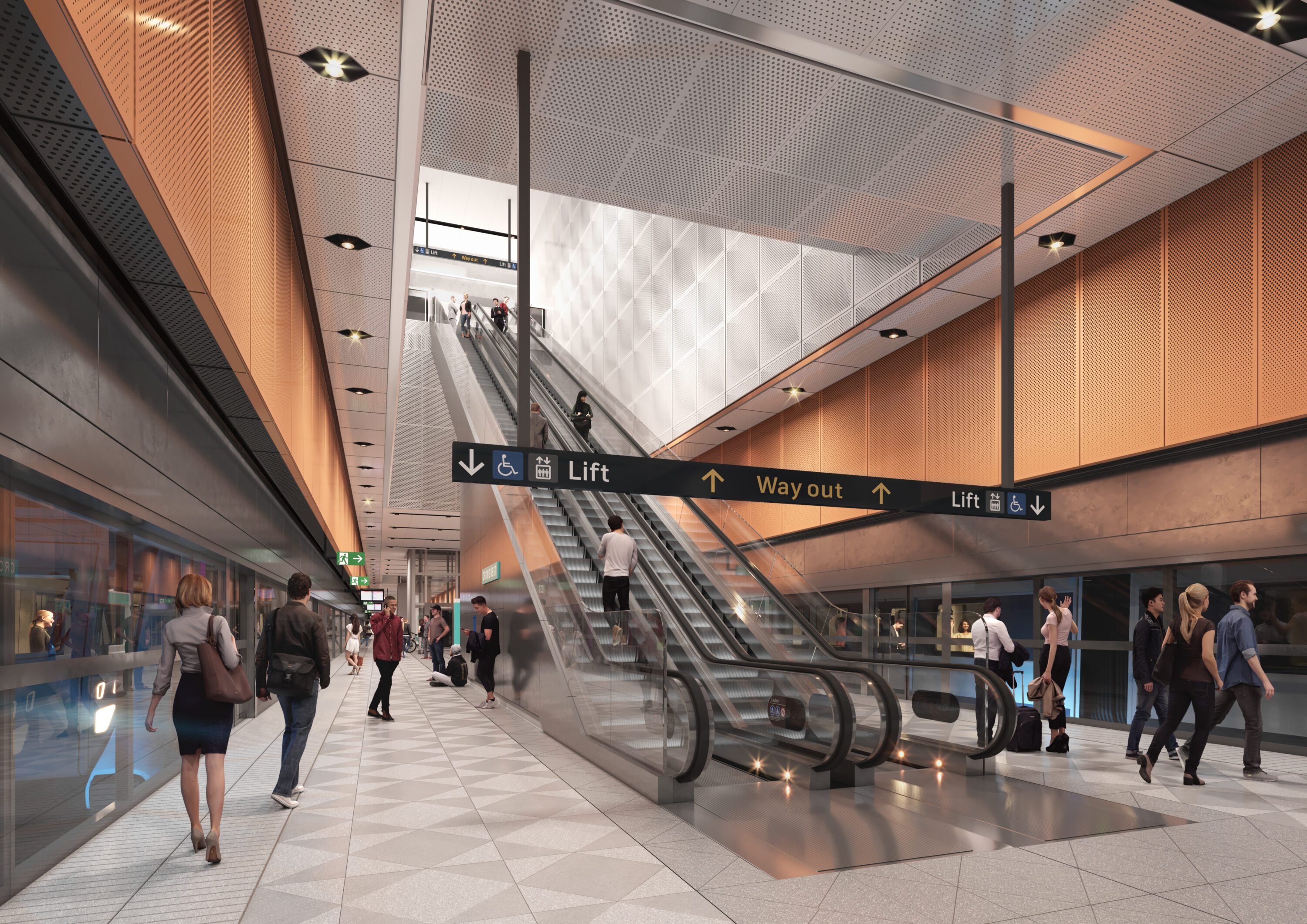
Crows Nest Station, NSW, Australia
Crows Nest Station is a new eight-level (six underground) station located on Pacific Highway between Oxley Street and Hume Street, constructed as part of the Sydney Metro City & Southwest project. This area is a growing commercial and residential precinct in close proximity to the village centre of Willoughby Road and close to the centre of St Leonards.
READ MORE>>
Balancing the needs of rail and the station development
While fire engineers need to mitigate fire hazards and safeguard people, property and business continuity, they also need to provide fire strategies that facilitate commercial opportunities in, above or adjacent to the station while providing practical outcomes for all asset owners and users.
This is why fire engineering experience in both rail and mixed use is important. This experience provides an understanding of the commercial drivers, rail imperatives, end user requirements and appreciation of what works and what doesn’t.
This is helpful in ensuring that a station doesn’t miss opportunities to activate areas because of an over-cautious approach to fire safety.
Safety assurance
Under Rail Safety National Law, all parties involved in design, construction, installation, supply and more, must ensure and demonstrate safety So Far As Is Reasonably Practicable (SFAIRP). The concept of SFAIRP is to achieve the best possible safety outcomes, to the extent that is ‘reasonably practicable’.
Performance-based fire engineering is no different and the principles of SFAIRP must be considered and demonstrated throughout all phases of a project and linked through a Hazard Log. This is a fundamental tool in capturing all potential hazards, assessing risk and tracking control measures through to project completion.
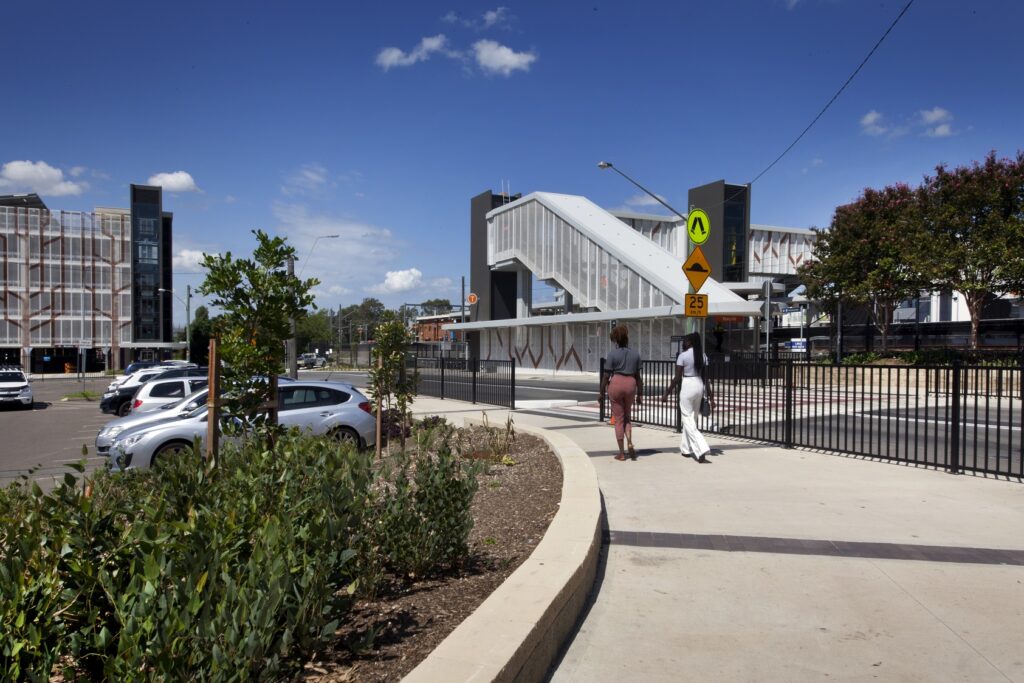
Rooty Hill Station Upgrade and Multi-Storey Car Park, NSW, Australia
The $56 million Rooty Hill Station Upgrade and new Multi-Storey Car Park project was part of station accessibility upgrades within the Transport Access Program that aim to provide a better experience for public transport customers by delivering accessible, modern, secure and integrated transport infrastructure.
the impact of good fire safety design
Architectural flexibility
The most critical consideration for architectural flexibility is how the interfaces work together. If following ‘one size fits all’ prescriptive building codes, you would fire separate classifications from each other in a mixed-use development.
However, from a design perspective, that doesn’t always lead to a good architectural outcome or benefit the end user. Asset owners and architects want spaces, especially on the ground-plane, to be integrated to enable architectural expression, seamless pedestrian flow and to maximise amenity.
Activated retail and mixed use
Projects can miss opportunities for activating and integrating retail, and other mixed uses, due to adherence to prescriptive standards. When engaged early, performance-based fire engineering can maximise commercial opportunities and enable better outcomes.
Integration of fire safety strategies
Each individual asset class has differing operational priorities. It’s important to integrate the fire strategies where there’s operational overlap and interfaces. This could include consideration of operating hours, fire safety systems and responsibility for maintenance. The fire strategy will vary depending on whether the project is an integrated, enabled or adjacent station development.
- Integrated / over-station development
- The fire safety strategy and associated measures for station and the development need to be integrated to enable flow, maximise commercial opportunities as well as achieving space and cost efficiencies, without compromising safety.
- The station needs to continue to run when equipment is being serviced. There also needs to be clear delineation of responsibility for fire safety systems in an interface strategy.
- An OSD might include apartments, retail and commercial. Residents or tenants in one part of the development don’t want to be impacted by a nuisance alarm in another part, perhaps leading to a full residential evacuation, commercial disruption, lost revenue or rail operations being suspended.
- Enabled development
- The fire strategy needs to consider the likely needs of a future – an over station development yet to be designed – and ensure that provision is made such that rail operations are not impacted by future development works.
- An example might be that space will need to be provided for future OSD fire stairs. Any areas that are constructed for future OSD use are best designed as cold shell areas to avoid the need to modify or isolate station fire systems when the future OSD is constructed.
- Adjacent development
- The fire safety systems need to mitigate the risk of fire spreading between the station and adjacent developments and disruption between buildings.

Gadigal Station Integrated Station Development, Sydney, NSW, Australia
NDY is part of a multi-disciplinary technically assured organisation (TAO) accredited team and the approved engineer to independently review the OSD works delivered by the Gadigal Station ISD developer (Oxford/CPB Contractors/Grocon). The aim of the review is to ensure that the OSD design, construction, operation and maintenance does not have an adverse impact on the metro station.
READ MORE>>
A holistic approach to fire safety
Projects in this sector are very different in terms of design requirements, process, standards, stakeholders and interfaces. The role of the fire engineer is often much broader and more holistic than other sectors. Often, they need specific qualifications to work on a particular project, for example the Technically Assured Organisation (TAO) accreditation for Transport for New South Wales, Australia .
A fire engineer who understands the rail sector as well as all of the building typologies in a mixed-use development can help keep budget, timescale and the approvals process on track. They can also enable retail and commercial activation and make a station an enjoyable place to be.
Footnote
At NDY, we have a long history of providing technically assured fire life safety consulting services in the transport sector. In the last 2 years alone, we’ve been involved in the construction, extension and upgrades at more than 30 train stations, 3 road tunnels and 4 airports, across 5 states and 1 territory in Australia. This has been in the role of designer, independent certifier, independent verifier, peer reviewer and client advisor to investors acquiring over-station developments.
We’ve also been asked to certify the work of other consultants whose organisation may not have the necessary accreditations.

